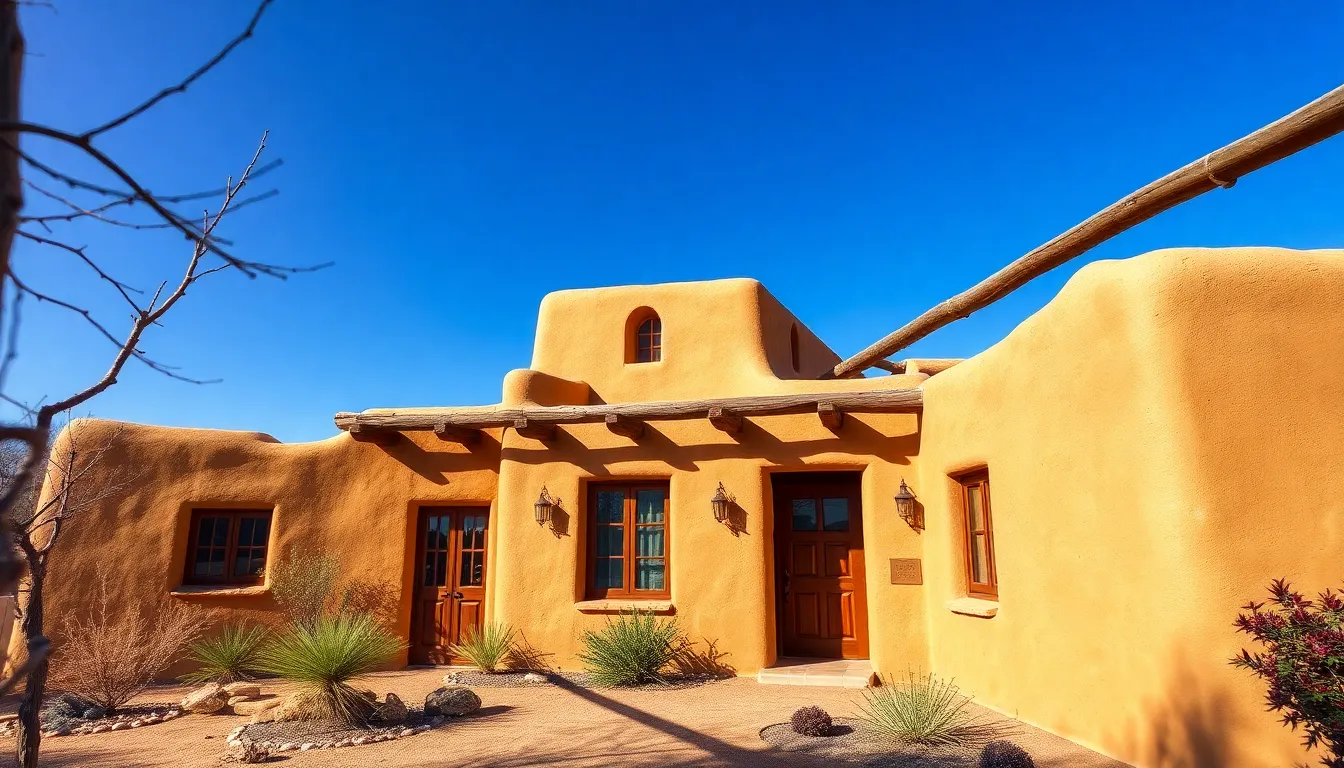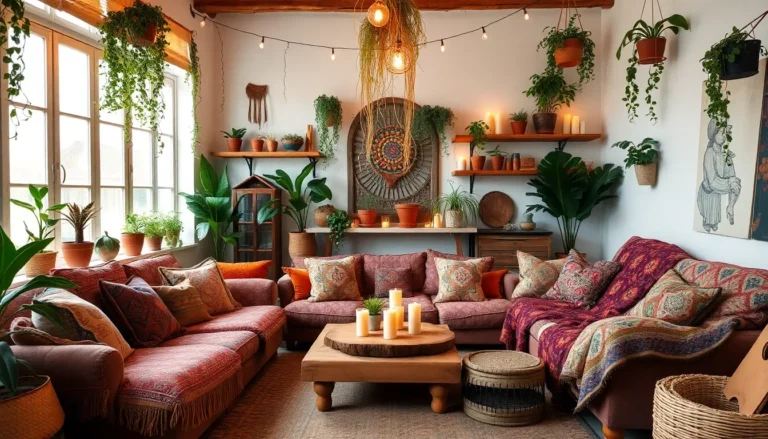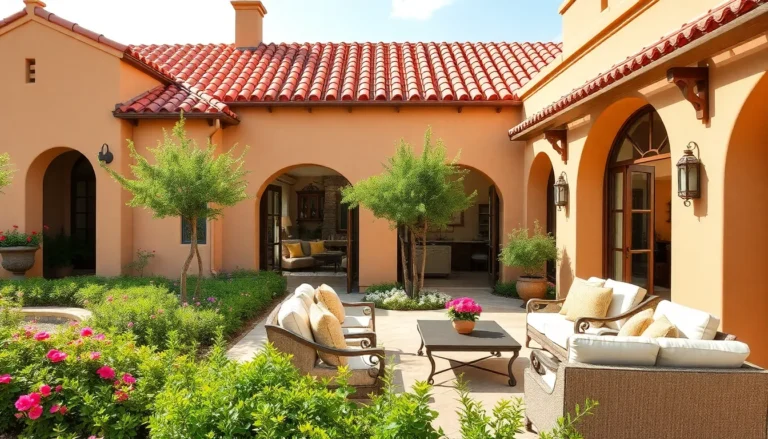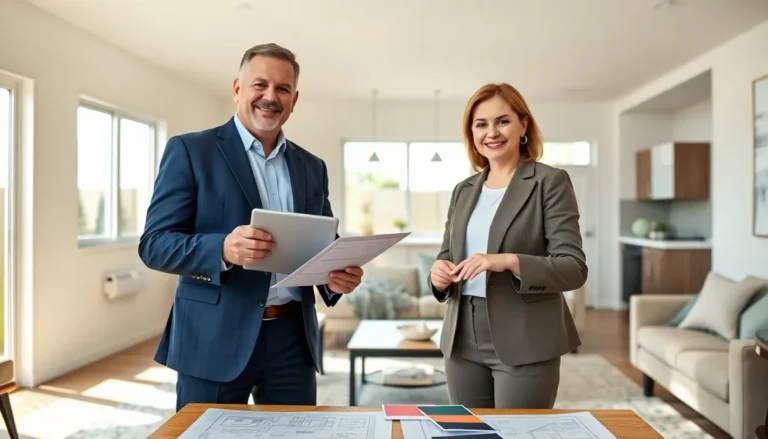Table of Contents
ToggleEver wondered what makes a home feel like a warm embrace? The secret often lies in its style, with Adobe homes standing out as a testament to timeless architecture. Blending seamlessly with their arid surroundings, these buildings whisper tales of sun-soaked landscapes and rich cultural heritage. If you think this style is all about mud bricks and rustic charm, buckle up. We’re diving into the alluring world of Adobe homes, highlighting their unique allure, essential features, and why they might just be the dream home you’ve been searching for, complete with a cultural twist to keep things lively.
Understanding Adobe Style Architecture
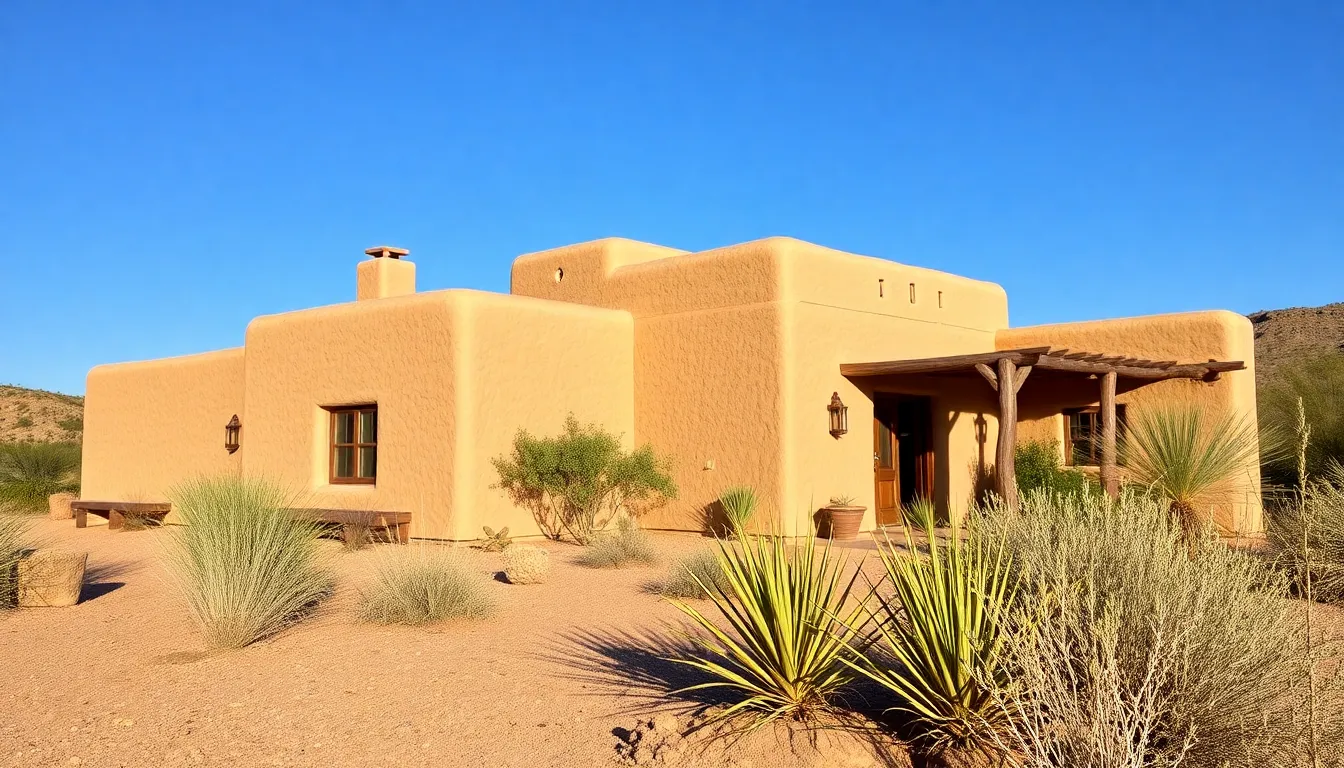
Adobe style architecture traces its roots back to ancient practices that use locally sourced materials. Originating from the Southwestern United States and influenced by Native American and Spanish colonial methods, adobe structures are constructed using sun-dried earth mixed with water and straw. This simple yet effective technique has weathered the test of time. Beyond their aesthetic appeal, these homes are built to harmonize with their environment, maintaining cool interiors even under the blazing sun.
Familiar types of Adobe houses include the traditional Pueblo-style dwellings featuring thick, often multi-storied walls, rounded corners, and low ceilings. Each of these houses tells a story, reflecting the culture and the geographic uniqueness of the region. This architectural style isn’t just a sight to behold: it’s a synthesis of utility, environmental consideration, and artistry.
Key Characteristics of Adobe Style Homes
Adobe style homes possess a distinct charm that is hard to replicate. Thick walls made from adobe provide excellent insulation, keeping homes cool in summer and warm in winter. Often, you’ll find rustic wooden vigas (beams) accentuating the ceilings, adding to the home’s character and providing structural support.
Besides, the earthy tones and textures of the exterior walls blend beautifully with the landscape, creating a natural aesthetic. Windows are typically small and strategically placed to maximize light while minimizing heat gain. Courtyards are common in these homes, and they serve as perfect spots for outdoor living, promoting a strong connection with nature.
Finally, it is not unusual to see intricate tile work and handmade decorations adorning the interiors, showcasing local craftsmanship and vibrant colors that bring life to the living spaces.
Benefits of Living in Adobe Style Homes
Choosing to live in an adobe style home means more than just appreciating unique architecture: it comes with a series of benefits. The primary advantage is energy efficiency. Due to their thermal mass, adobe houses maintain stable indoor temperatures, which leads to reduced reliance on heating and cooling systems. This is not just good for the environment: it also leads to substantial savings on energy bills.
Also, adobe homes are incredibly durable. Properly maintained, they can withstand harsh weather conditions, and their natural materials prevent the proliferation of rot and mildew. Living in an adobe home encourages a lifestyle that appreciates simplicity and sustainability.
Also, the connection to nature that these homes foster enhances overall well-being. Open spaces, natural light, and outdoor living areas promote a relaxed atmosphere, perfect for unwinding after a long day.
Designing Your Own Adobe Style Home
Designing an adobe style home is an exciting venture that combines traditional principles with modern preferences. Start by selecting the right site: ideally, it should complement the natural surroundings. Incorporating courtyards and terraces enhances outdoor living and encourages a seamless transition between indoor and outdoor spaces.
Selecting the right materials plays a pivotal role in the design process. Use local clay and naturally sourced straw to stay true to the tradition. Once you understand the basic materials, you can unleash your creativity through the design of interior details like hand-painted tiles or unique light fixtures.
Don’t forget about incorporating elements that maximize sustainability. Installing solar panels can promote energy independence, while rainwater harvesting systems ensure efficiency in maintaining gardens. Eventually, the design of your adobe home should focus on functionality while celebrating unmatched beauty.
Sustainability and Adobe Homes
The conversation around sustainability is more relevant than ever, and adobe homes shine in this context. Utilizing earth and organic materials not only minimizes carbon footprints but also promotes biodiversity by integrating homes into their natural settings. These structures can be a key player in sustainable architecture, utilizing minimal energy and maintaining low emissions.
Adobe homes can be further enhanced with modern sustainable practices, such as integrating green roofs or creating passive solar designs. The natural properties of adobe contribute to temperature regulation without consuming excessive energy resources. Gardens and surrounding landscapes in adobe communities often use xeriscaping principles, incorporating native plants that require little irrigation.
As sustainability becomes a priority for many, adobe homes serve as both a reminder of cultural history and a beacon for future eco-friendly living. By embracing this architectural style, homeowners can play a part in the growing movement towards responsible construction.

